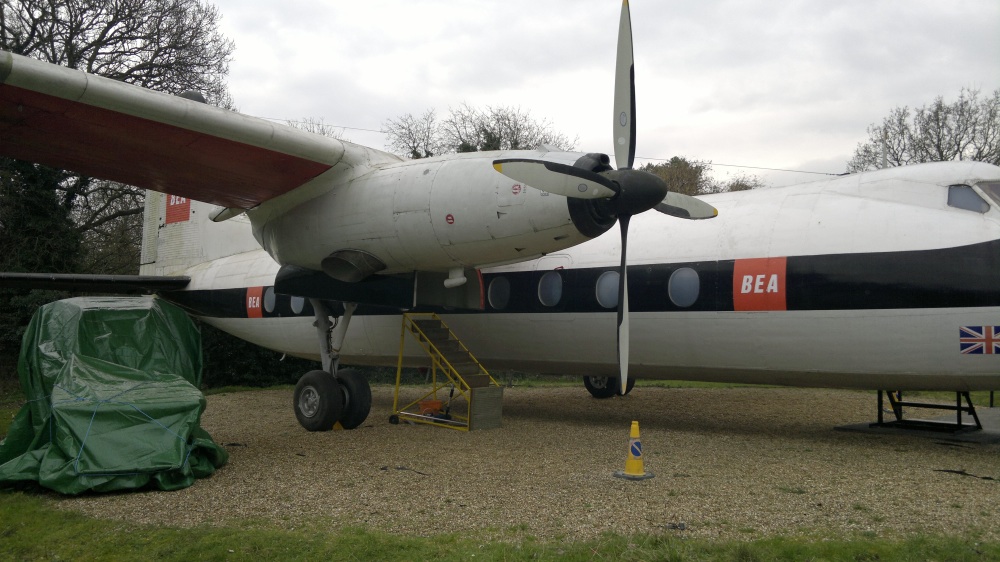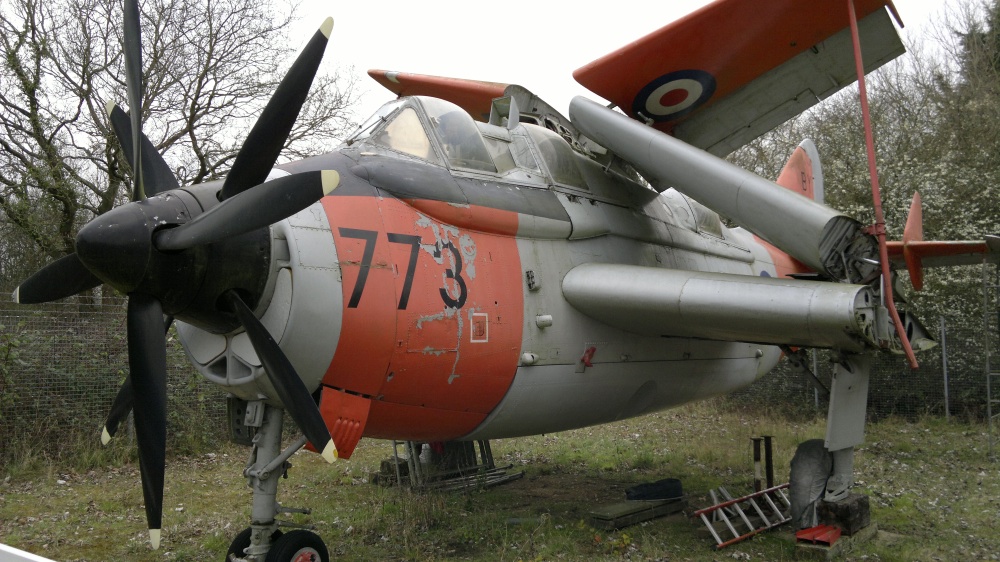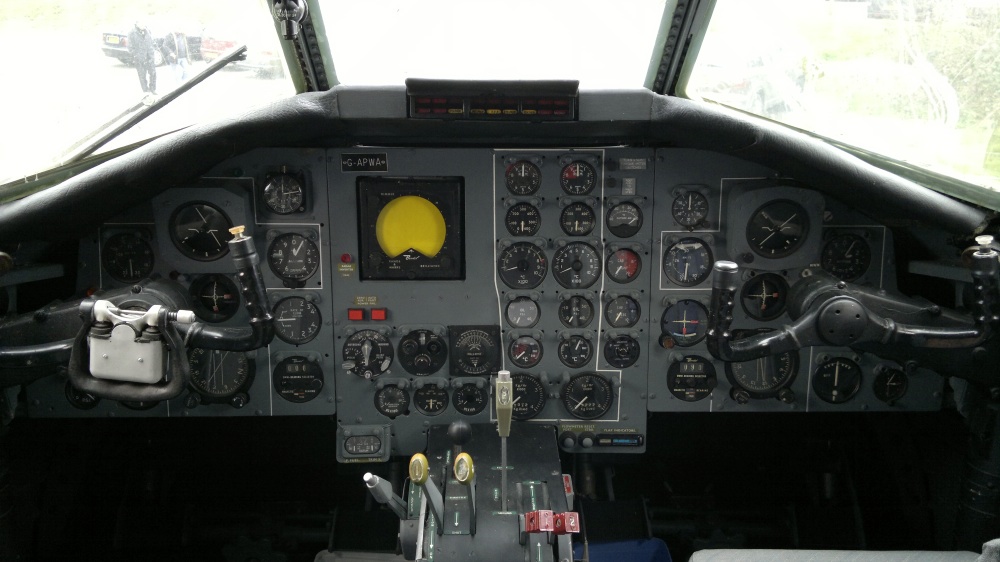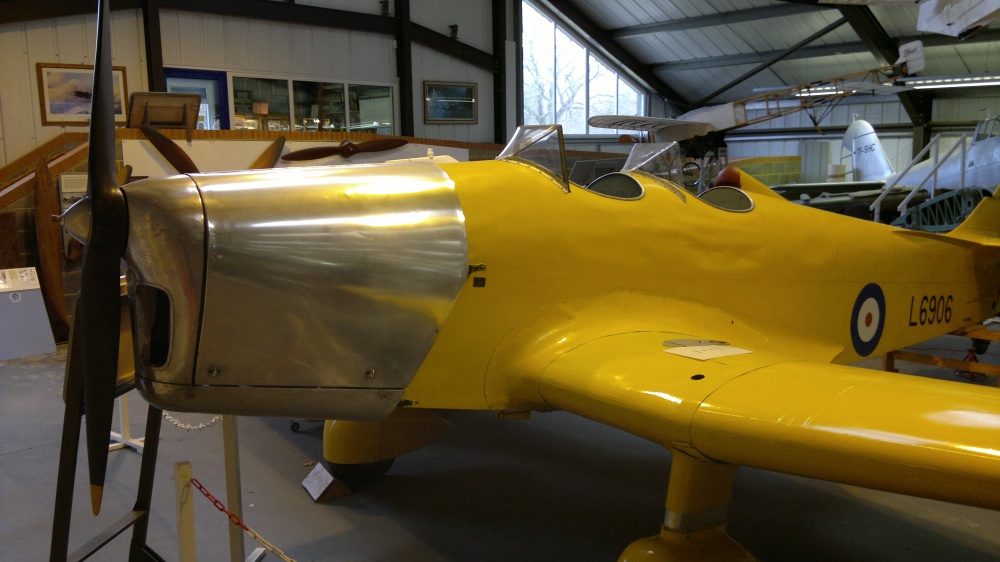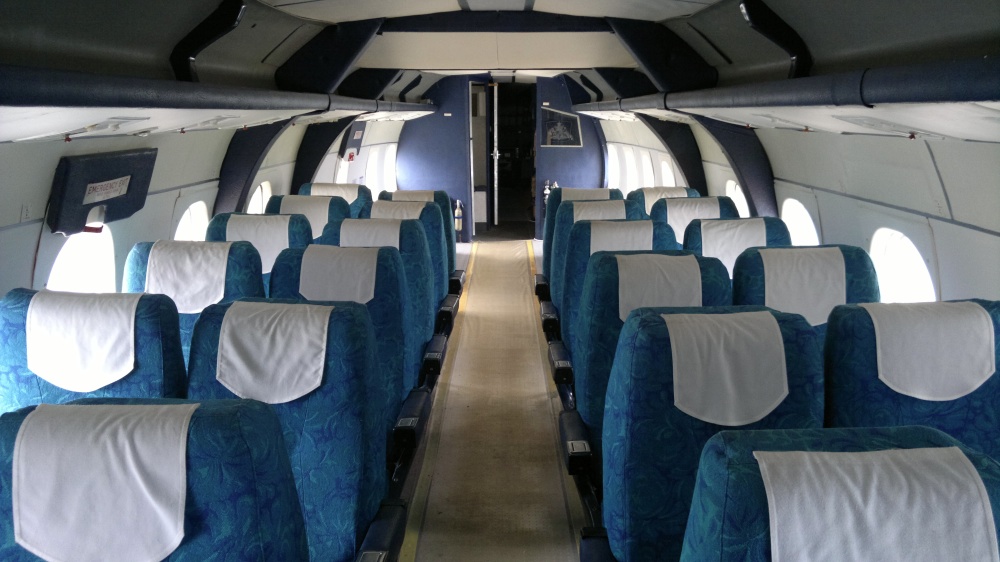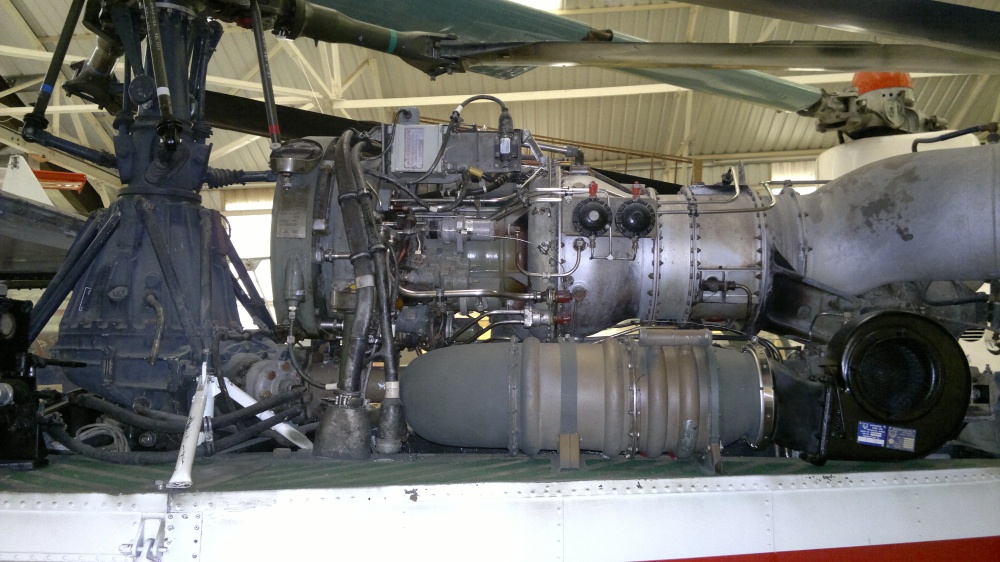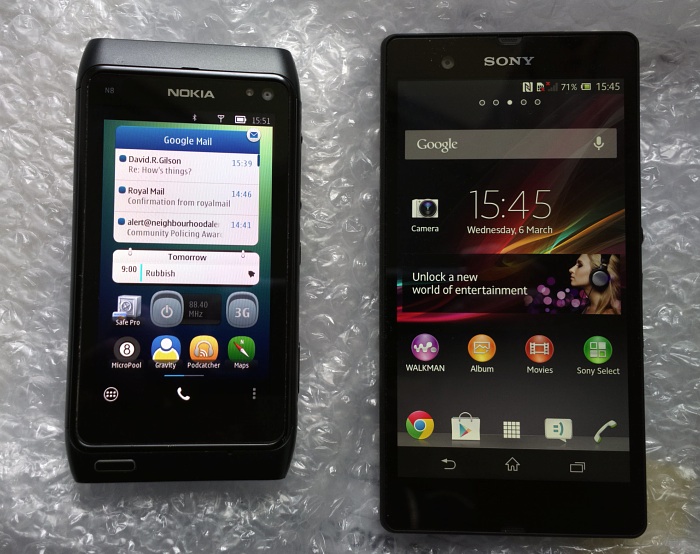
The blurb on Sony's site says:
With Exmor RS™ for mobile and HDR, Xperia Z takes sharp photos and videos both in lowlight and strongly backlit conditions. The lowlight sensors on front and back make it the first dual Exmor R™ for mobile camera.
Not a pro with settings? Superior Auto mode automatically activates HDR and noise reduction when they’re needed.
Lowlight and strongly backlit conditions? Sounds like a challenge to me, especially given the UK winter!
I'll show comparisons with Nokia's newer 808 in due course, but right now we're looking at comparison photos with the N8, armed with its no fuss, no image post-processing, large 1/1.8" sensor and Carl Zeiss lens assembly. Can great physics compete with a small sensor and modern, heavy image processing? Let's find out.
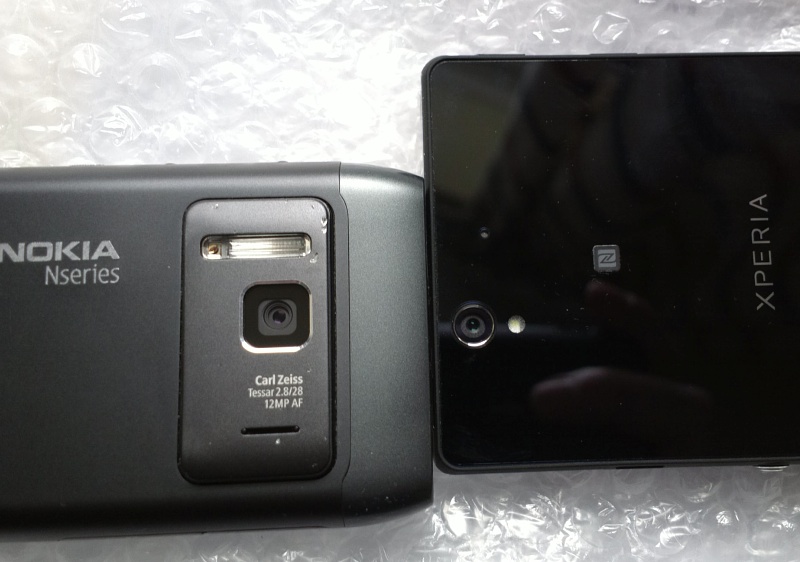
NB.
- Both phones were left on full auto (aside from flash control)
- Both phones were in 16:9 shooting mode (so roughly 9MP each)
- In each comparison crop below, the N8 photo is on the left, the Xperia Z one on the right
Test 1: Medium distance detail, bright sky behind, overcast
The aim here was to pick out detail and trust the Xperia Z's built-in auto-HDR to kick in. Below is shown the full scene, taken with the N8, click the image to download the original JPG. And here's the Xperia Z's original image.
As usual, I try and do the analysis for you. In this case, looking at both the overall handling of light, dark and colour, and also cropping into compare central details:
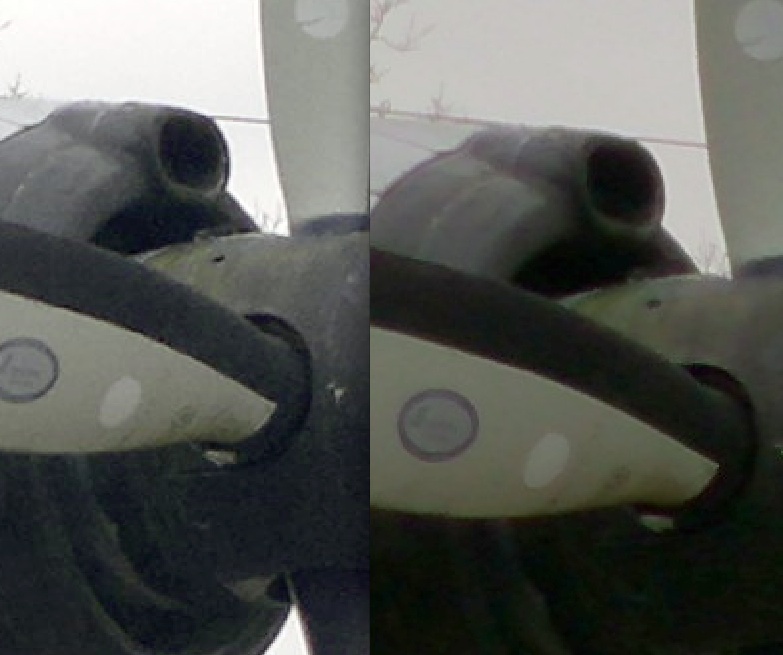
I'm going to be generous to the Xperia Z here and award a draw. The N8 photo, with its typical lack of any post-processing at all, under such low light conditions produces quite a bit of sensor noise, whereas the Xperia Z smooths noise out of the way very successfully. However, my eyes tell me that, despite the noise, the N8 shot does have slightly more detail in it. So yes, a draw.
Test 2: Still overcast, a little closer, again shooting against the sky
Again playing to the Xperia Z's strength, here's another shot which is sure to be HDRed by the Z. Below is shown the full scene, taken with the N8, click the image to download the original JPG. And here's the Xperia Z's original image.
As usual, I try and do the analysis for you. In this case, looking at both the overall handling of light, dark and colour, and also cropping into compare central details:
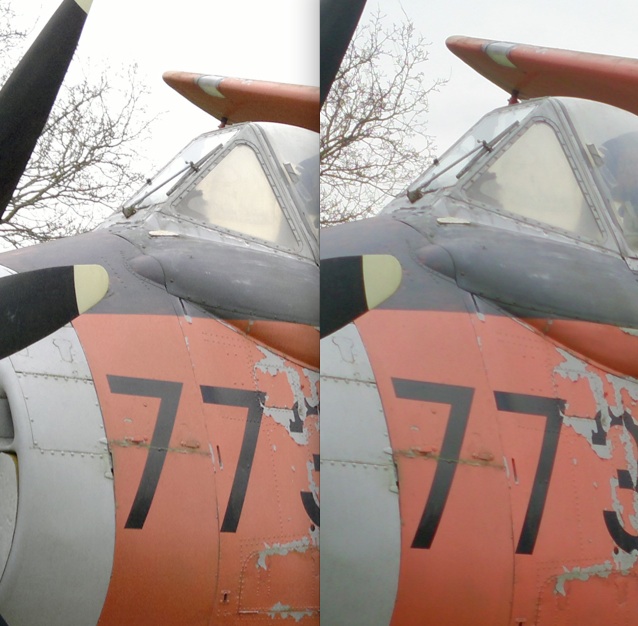
Another draw, I think. The Xperia Z does wonderfully well at exposing the cockpit surrounds, for example, with good enough contrast across the whole image. On the other hand, despite ending up with a slightly washed out cockpit, the N8 image has, ultimately, more detail - look at the rivets on the body.
Test 3: Low light, inside (the cockpit), close subject, extreme detail available, no flash
Below is shown the full scene, taken with the N8, click the image to download the original JPG. And here's the Xperia Z's original image.
As usual, I try and do the analysis for you. In this case, looking at both the overall handling of light, dark and colour, and also cropping into compare central details:
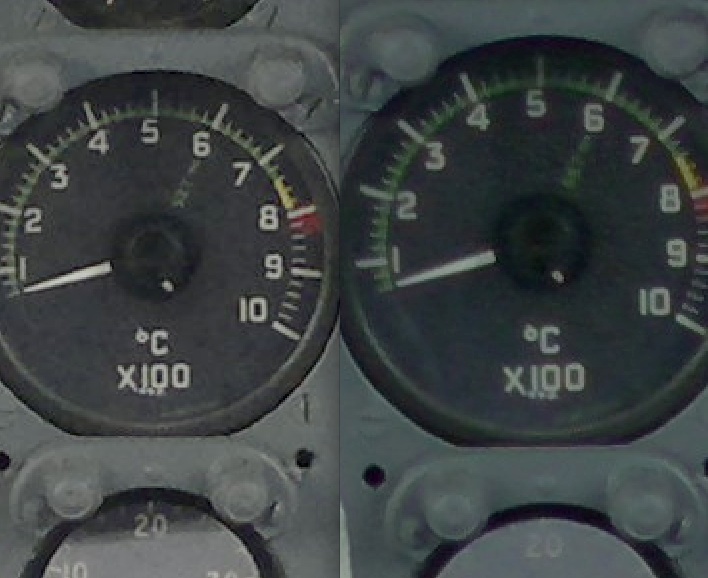
As the light levels go down, the Nokia N8's sensor size comes into play more, despite the BSI and image processing on the Xperia Z's camera. Physics wins, I think. The Xperia Z does well, but the N8's photo is just amazingly crisp. One up to the N8 then.
Test 4: Indoors, lots of artificial light, bright window behind, plenty of colour and detail
Below is shown the full scene, taken with the N8, click the image to download the original JPG. And here's the Xperia Z's original image.
As usual, I try and do the analysis for you. In this case, looking at both the overall handling of light, dark and colour, and also cropping into compare central details:
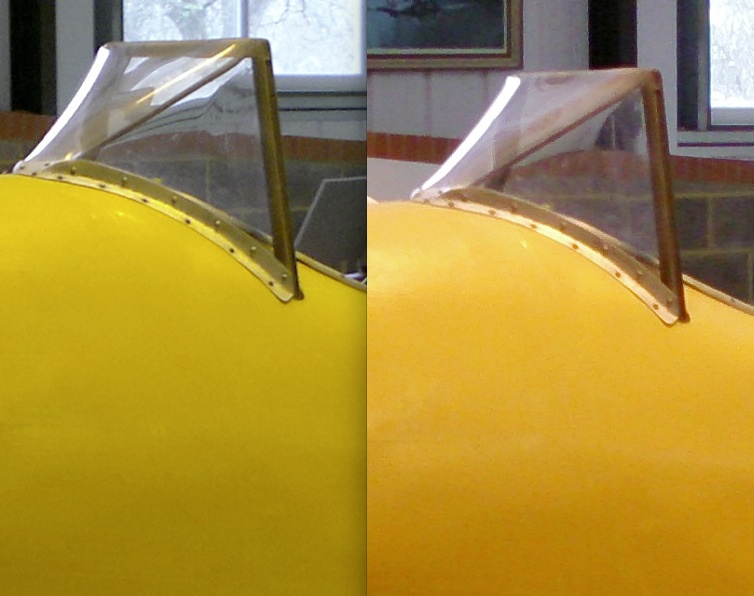
The N8 rather romps home with this test. Not only does it get the yellow of the plane spot on (go visit the museum if you don't believe me), but the detail on the fittings is exquisite. The Xperia Z's image isn't bad, but the colour is very slightly 'off' and the heavy processing blurs out detail on the cockpit fitting. A definite win for the N8.
Test 5: Bright and dark, challenging focus, no flash again
Below is shown the full scene, taken with the N8, in each case I focussed on the third seat from the back of the cabin, click the image to download the original JPG. And here's the Xperia Z's original image.
As usual, I try and do the analysis for you. In this case, looking at both the overall handling of light, dark and colour, and also cropping into compare central details:
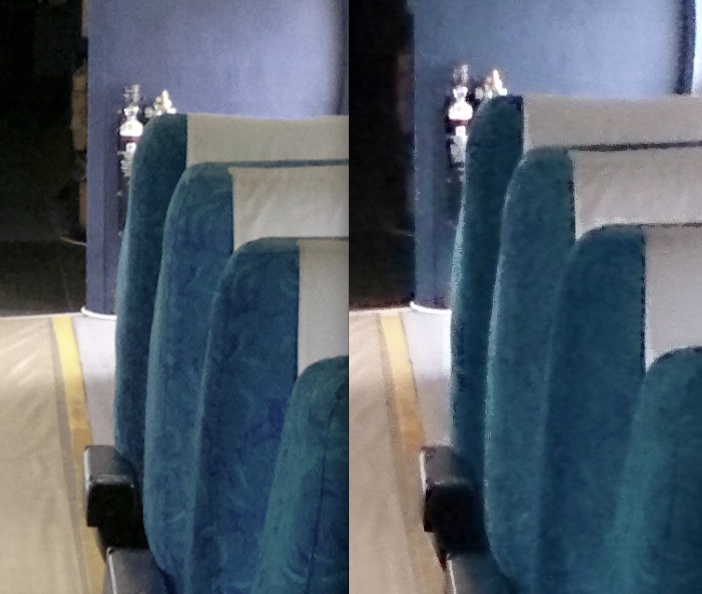
Sorry, Sony, I'm sure your BSI EXMOR RS sensor is the best you've ever made, but it doesn't come close to resolving the detail from photos taken by the 2010 Symbian phone. Look at the seat texture, the edges of the head covers, the extinguisher in the background. All show the artefacts in the Xperia Z image, while the N8's photo just shows lovely detail....
Test 6: subject with detail at 1.5 metres, flash allowed
For the first time in this test, I'm letting the N8 unleash its secret weapon - its proper Xenon flash. Below is shown the full scene, taken with the N8, click the image to download the original JPG. And here's the Xperia Z's original image.
As usual, I try and do the analysis for you. In this case, looking at both the overall handling of light, dark and colour, and also cropping into compare central details:
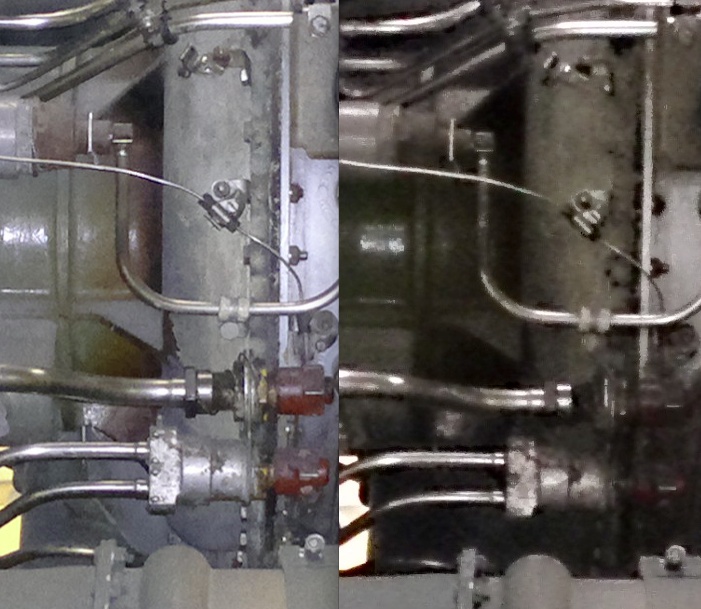
This, everyone (come on, lean in at the back and learn) is one of the two huge advantages of a proper flash, allied to a good camera sensor. There simply is no comparison at all between these two image crops. A win for the N8 by a huge margin. [The other advantage, of course, is that Xenon flash is much faster, so moving subjects are frozen rather than blurred.]
________________________
Six test shots then, all challenging in different ways, with the final score being two draws and four wins (at least two of which are dramatic) for the Nokia N8. That a 2010 smartphone camera can best a 2013 flagship isn't really that surprising. Nokia's leadership in imaging with their Symbian smartphones was of the order of two or three years, so in truth I would only be starting to expect the competition to catch up about now.
Critics will point out that the N8's camera is its biggest ('only'?) attribute, while the Xperia Z has a bigger and better screen, a faster processor, more RAM, more applications and more connectivity features. All of which are true, which is why my next comparison will put the Xperia Z up against the 2012 Nokia 808, which gets closer in terms of overall functionality and features, plus I'll throw in the late 2012 Nokia Lumia 920 as well, with similar sensor size to the Xperia Z. A three way comparison coming imminently then, with the same test shots as above.
This being 'Nokia N8 day' on AAS though, I'm happy to pronounce that it can hold its head up well and truly against the best camera phones of 2013. Which won't surprise existing N8 owners one tiniest little bit.

